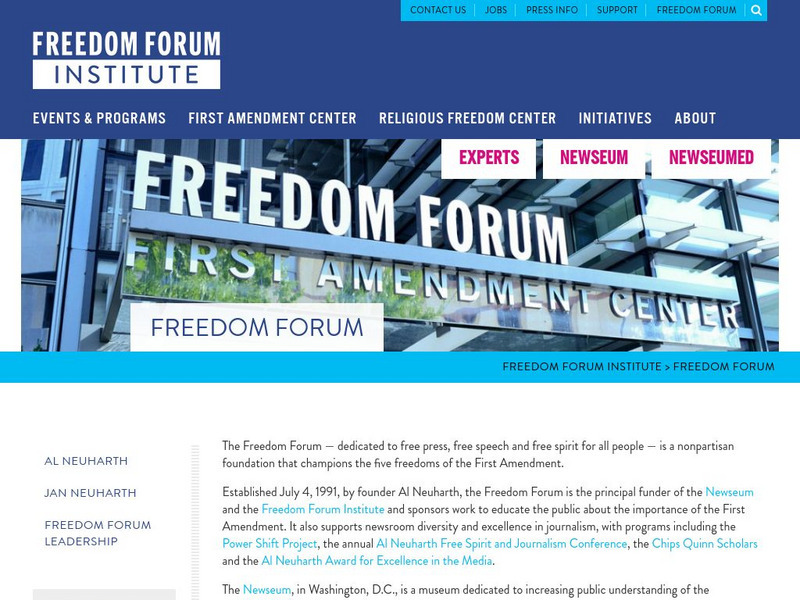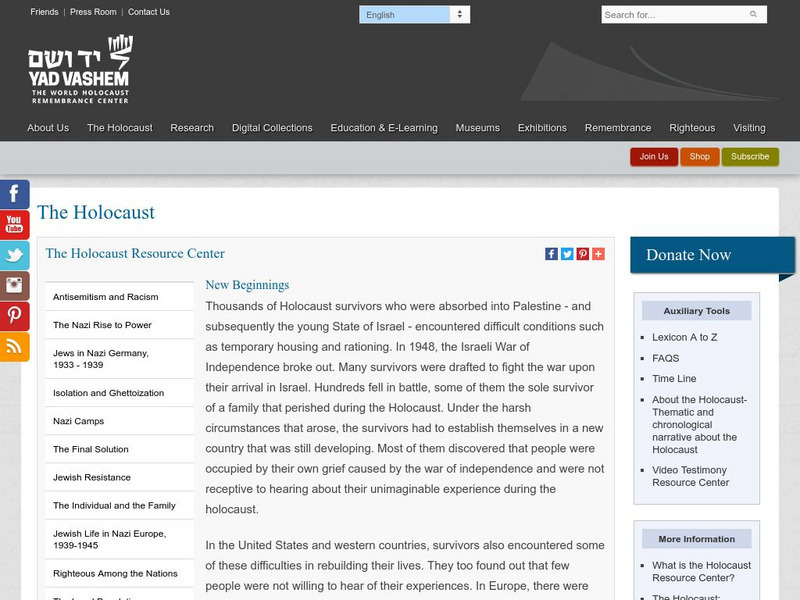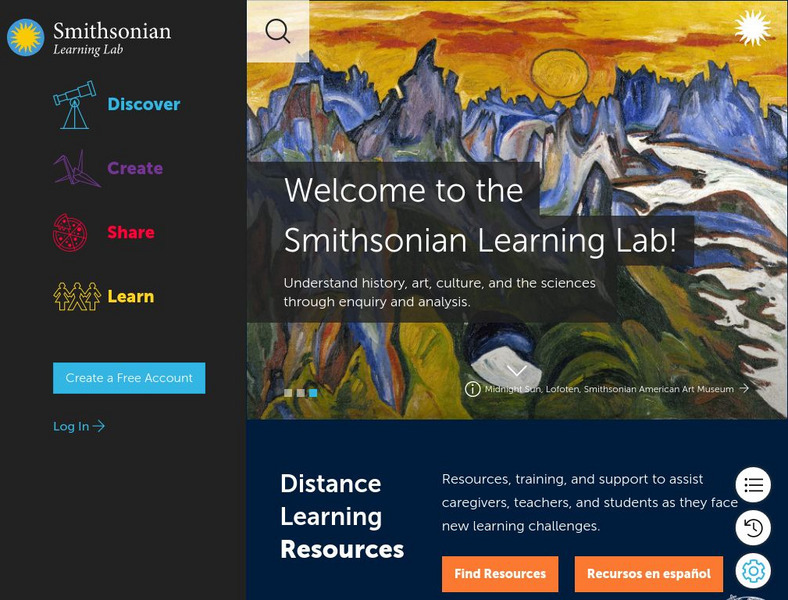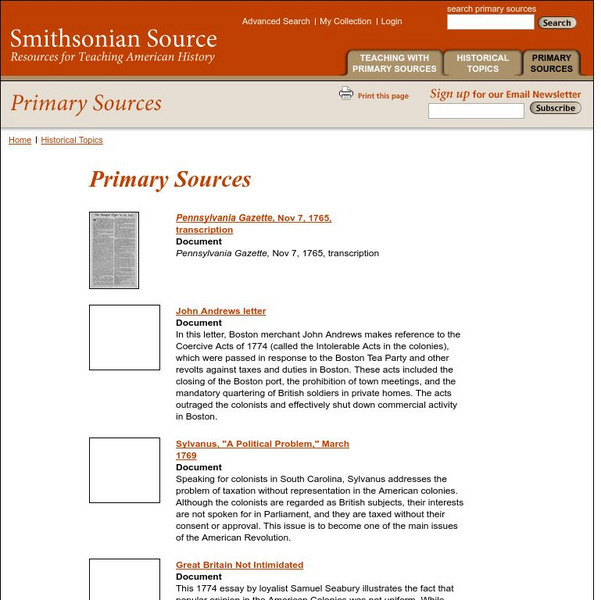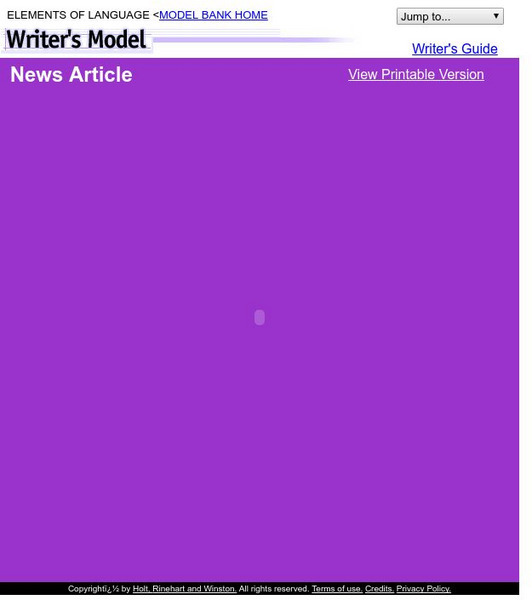Hi, what do you want to do?
Annenberg Foundation
Annenberg Learner: America's History in the Making: Historical Thinking Interactives
Six interactive activities are presented that walk students through how to use their critical thinking skills in the analysis of historical artifacts and documents. The sixth one explains how to balance the various perspectives that...
University of California
Uc Irvine: Distinguishing Between Primary & Secondary Sources
This site has an online quiz to test your knowledge of primary and secondary sources.
University of California
Uc Berkeley Library: Critical Evaluation of Resources
Questions to ask yourself when determining if a source is reliable. Discusses difference between primary and secondary source. List of reference sources and links to other sites that teach you how to evaluate sources....
Duke University
Duke University Libraries: Finding Primary Sources
Finding primary sources can be difficult and confusing at times. This site provides a list of history databases, rare books and manuscripts, and research guides for those looking for primary resources such as diaries, letters,...
Other
The Freedom Forum Online
This Freedom Forum site is dedicated to promoting a free press. Journalism education and "improving understanding between the media and the public" are a major focus. Budding journalists will enjoy this site. Includes links to news...
Center for Innovation in Engineering and Science Education, Stevens Institute of Technology
Ciese: Historical Treasure Chests
After learning to distinguish between primary and secondary sources, students will examine four primary documents and address a set of questions for each.
University of California
University of California, Davis: The History Project
The History Project is a growing collection of lesson plans, teaching tools, digitized images, and documents for the teaching of history. Includes assignments for having students apply analytical skills to primary sources.
Yad Vashem, The World Holocaust Remembrance Center
Yad Vashem: The Holocaust Resource Center New Beginnings
Yad Vashem has the largest collection of Holocaust primary sources than anywhere else in the world. Their main objective is preserving all the stories of this time period so it is not forgotten or repeated. They have broken down the...
Yad Vashem, The World Holocaust Remembrance Center
Yad Vashem: The Holocaust Resource Center Displaced Persons Camps
Yad Vashem has the largest collection of Holocaust primary sources than anywhere else in the world. Their main objective is preserving all the stories of this time period so it is not forgotten or repeated. They have broken down the...
Smithsonian Institution
Smithsonian Learning Lab: Teaching With Primary Sources
Five lesson plans, complete with videos, primary sources, and document-based questions (DBQ) to encourage students to utilize primary sources and incorporate thinking and writing into daily learning. Topics include: Artifact &...
NBC
Nbc Learn
NBC Learn, the educational arm of NBC News, is dedicated to making historic stories, images, and primary source documents available on-demand to teachers, students, and parents.
Smithsonian Institution
Smithsonian: Engaging Students With Primary Sources
This reference guide is designed to highlight the benefits of using primary source materials in any classroom and to provide the teacher with practical suggestions and examples of how to do this. It includes a bibliography and links to...
Harry S. Truman Library and Museum
Truman Library & Museum: Incorporating Primary Sources in the Classroom
Students and teachers are given direction in how to work with the primary source materials of the Harry S Truman Presidential Library.
Smithsonian Institution
Smithsonian Source: Resources for Teaching American History: Primary Sources
A varied collection of primary resources from American history. They include portraits, banknotes, artifacts, newspaper items, paintings, and illustrations.
Other
The History of the First Ten Newspapers in America
This site contains a brief history of the first ten newspapers printed in colonial America.
Other
History of Alternative Journalism in 20th Century
This site contains a timeline of the history of alternative journalism beginning in 1900. Includes description & brief discusses of various alternative publications.
PBS
Pbs Learning Media: Common Sense Education: Identifying High Quality Sites
Learn how to "test before you trust" the sites and information found on the Web in this lesson plan and student handout from Common Sense Education. Assessing what you find on the Web is an essential skill for today's students. Use this...
PBS
Pbs Learning Media: Straight to the Source: Primary and Secondary Sources
Students discover what primary and secondary sources are and how to use them in this lesson from PBS Wisconsin Education. They watch video clips from the documentary "Wisconsin Hometown Stories: Neenah-Menasha," identifying the primary...
PBS
Pbs Learning Media: Primary Source Set: Shays' Rebellion
A collection that uses primary sources to explore Shays' Rebellion.
PBS
Pbs Learning Media: Primary Source Set: Creating the Us Constitution
A collection which uses primary sources to explore the creation of the US Constitution.
PBS
Pbs Learning Media: Primary Source Set: Primary Source Set: Telephone Invention
This collection uses primary sources to explore the invention of the telephone.
PBS
Pbs Learning Media: Primary Source Set: 19th Century Schools for the Deaf, Blind
This collection uses primary sources to explore the development of schools for deaf and blind students in the nineteenth century.
PBS
Pbs Learning Media: Primary Source Set: Powhatan People and English at Jamestown
This collection uses primary sources to explore the encounter between the Powhatan people and English at Jamestown.
Houghton Mifflin Harcourt
Holt, Rinehart and Winston: Writer's Model: News Article Example
This two-page news article includes a left-hand column with pointers on placement of critical features. Clicking on the "Writer's Guide" link in the upper right-hand corner of the page enables the user to get tips, directions, and...









